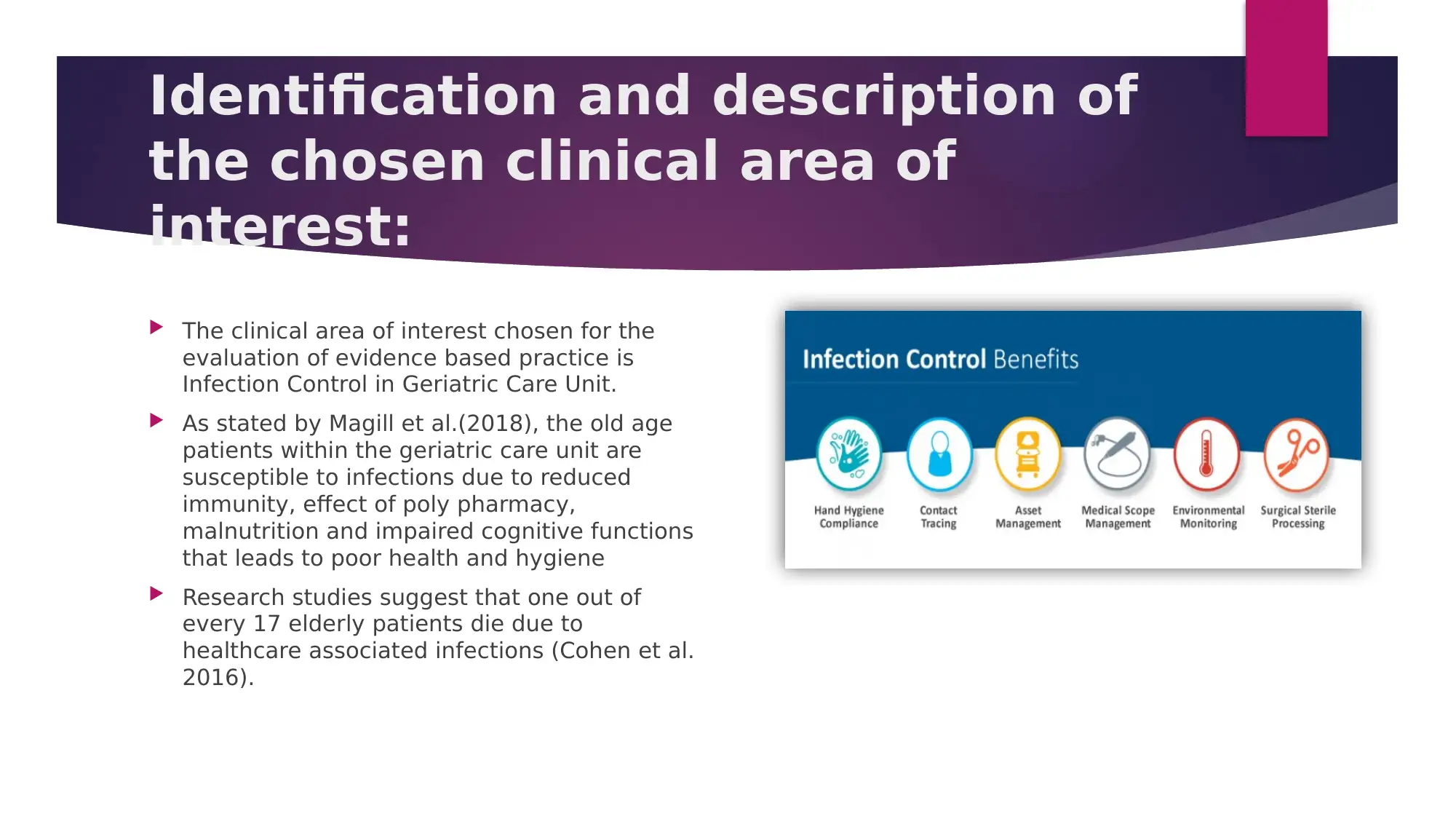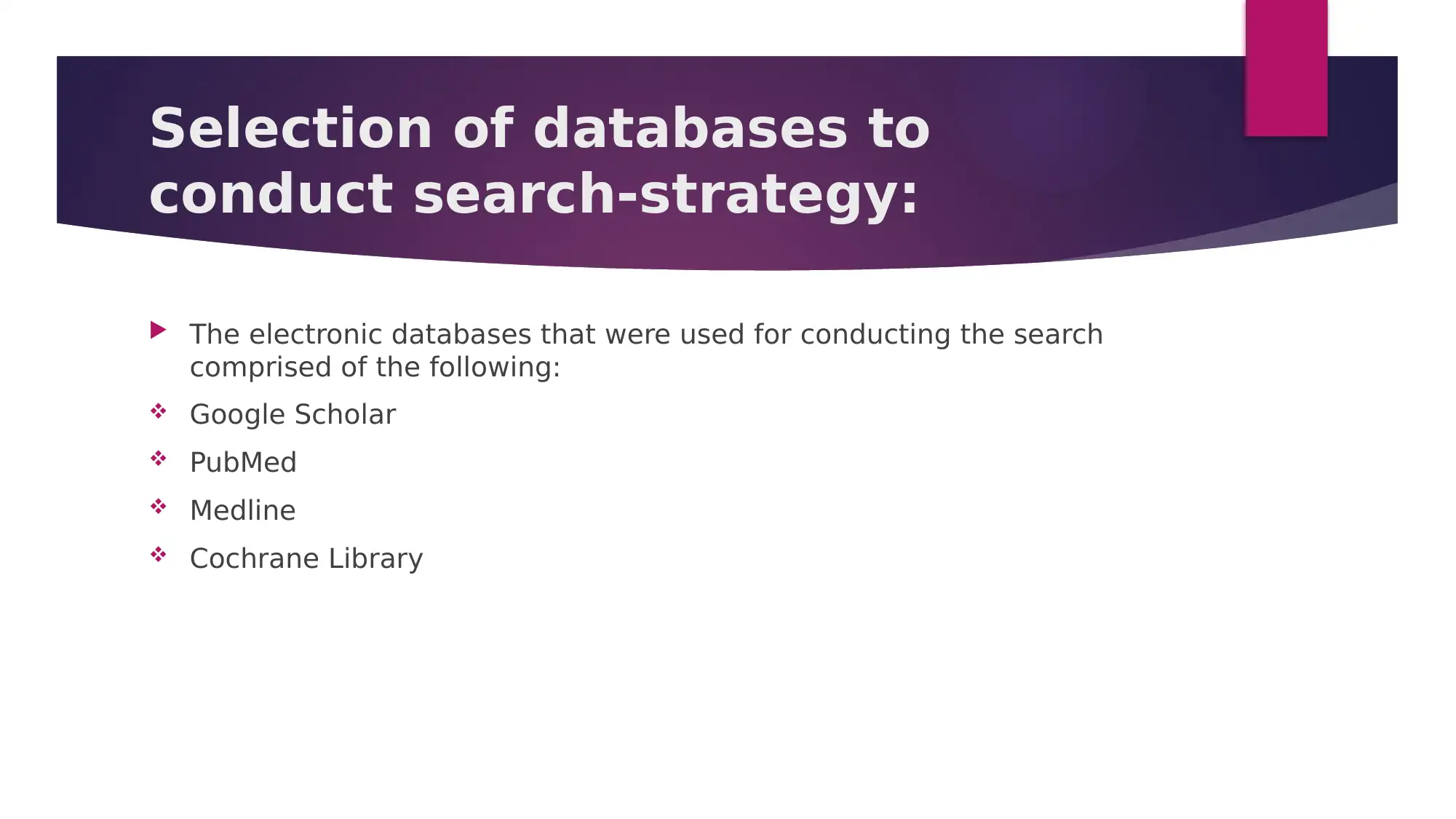Evidence-Based Practice: Infection Control in Geriatric Care Unit
VerifiedAdded on 2022/12/30
|7
|582
|90
Homework Assignment
AI Summary
This assignment focuses on evidence-based practice in the context of infection control within geriatric care units. The student identifies the clinical area of interest, highlighting the vulnerability of elderly patients to infections due to factors such as reduced immunity and polypharmacy. A detailed search strategy is described, utilizing electronic databases and specific key terms, Boolean operators, and inclusion/exclusion criteria. Several research papers are selected and reviewed, including studies on infection prevention in nursing homes, outbreak control, and cost-effectiveness analyses. The assignment provides a comprehensive overview of the chosen topic, the research methodologies used, and the implications of the findings for improving patient care in geriatric settings.
1 out of 7














![[object Object]](/_next/static/media/star-bottom.7253800d.svg)